 The Colorado River, the source of the Grand Valley’s irrigation water, flows through Debeque Canyon.
The Colorado River, the source of the Grand Valley’s irrigation water, flows through Debeque Canyon.
For five years, Zay Lopez tended vegetables, hayfields and cornfields, chickens, and a small flock of sheep here on the western edge of Colorado’s Grand Valley — farming made possible by water from the Colorado River.
Lopez has a passion for agriculture, and for a while, he carved out a niche with his business, The Produce Peddler, trucking veggies seven hours away to a farmers market in Pinedale, Wyoming.
Lopez also moonlights as a realtor, with his finger on the pulse of the local real estate market. A few years ago, he noticed a strange new phenomenon. Much of the irrigated agricultural land sold in the valley — such as parcels just down the road from his farm — wasn’t being bought by another farmer. Instead, his new neighbor was Water Asset Management, a New York City-based hedge fund with deep pockets.
When Lopez and his wife Leah grew tired of trying to make ends meet, they decided to pack up and move to southern Colorado to grow hemp. They, too, sold their 26-acre farm to WAM.
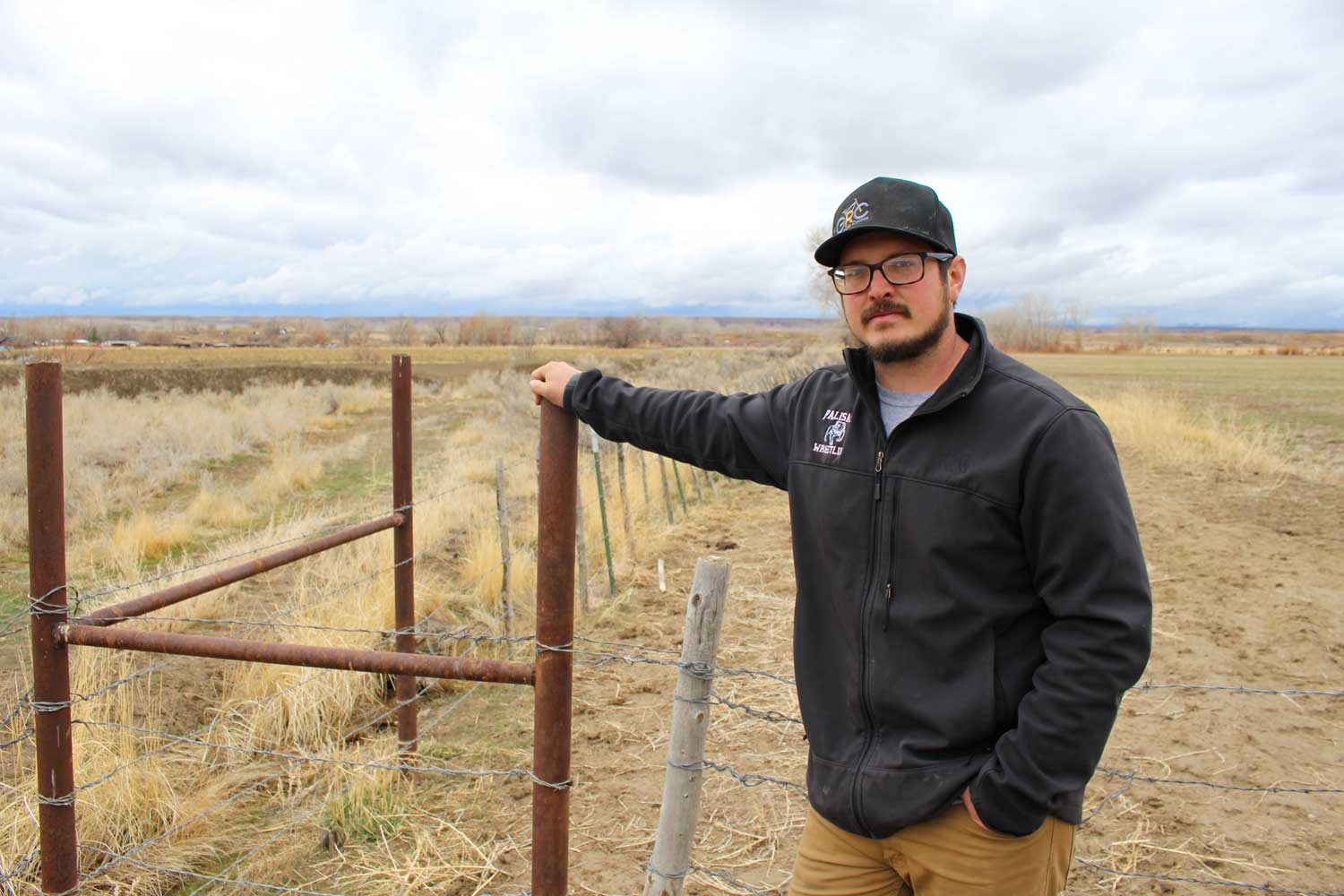 VIEW LARGER Farmer Zay Lopez ran his small market farm in the Grand Valley’s far west end for five years, using water from the Colorado River to grow vegetables.
VIEW LARGER Farmer Zay Lopez ran his small market farm in the Grand Valley’s far west end for five years, using water from the Colorado River to grow vegetables. “It was hard to make the mortgage payment plus all of our other payments, and I didn’t see — with our current model of what we were doing — how we could get out of that hole,” he said. “Selling the farm wasn’t really a choice. We had to do it.”
Lopez’s recent sale is the continuation of a trend that has made some in the agricultural communities west of Grand Junction nervous; has created a buzz among water managers; and has led state lawmakers to pass a bill looking at strengthening Colorado’s anti-water-speculation law.
WAM is buying irrigated land as an investment in the future potential value of the water. Although the company isn’t doing anything illegal, its actions have rekindled deep-seated and long-held fears about water in the West — that it could hasten the death of agricultural communities’ way of life and create an unregulated market for water that would drive up prices and drive out family farms.
Because of these sensitive issues, many people in the Grand Valley are reluctant to talk about WAM and what it is doing. Meetings have erupted in anger, some who have sold have become social pariahs, and top water officials from the valley’s canal companies refuse to talk to reporters on the record. For a while, a local rancher was actively updating a website “wall of shame” for people involved in Grand Valley water deals.
“They are the same concerns that have existed since the 1930s,” said Anne Castle, a senior fellow at the University of Colorado’s Getches-Wilkinson Center. “The east slope municipal diverters or an investment firm — it doesn’t matter who it is — are going to be able to offer more money for water than you could derive from farming or ranching. The concern is that if that becomes a trend, then the whole economy of the Western Slope changes and the agriculture economy will be very different and smaller than it is now.”
The Walton Family Foundation provides funding to KUNC and partial funding for Castle’s work. A member of the Walton family currently provides funding to Aspen Journalism via the Catena Foundation. [Story continues after map.]
Water Asset Management
Since 2017, WAM has spent $16.6 million buying up 2,222 acres of irrigated agricultural land in the communities of Fruita, Loma and Mack, west of Grand Junction. The company is now the largest landowner in the Grand Valley Water Users Association, the nonprofit canal company that delivers water to many Grand Valley irrigators.
WAM now owns 1,659 acres in the GVWUA delivery area, which according to its website has 23,341 irrigated acres. That means the hedge fund owns about 7% of the land irrigated by the Government Highline Canal.
WAM, whose headquarters is on Madison Avenue in Manhattan, says it “seeks to be a leader in managing global water investments that solve water quality and availability issues,” according to its website. WAM is run by co-founder and principal Disque Deane Jr., while Matthew Ketellapper has been doing much of the “boots on the ground” work in the Grand Valley as the company’s Colorado asset manager.
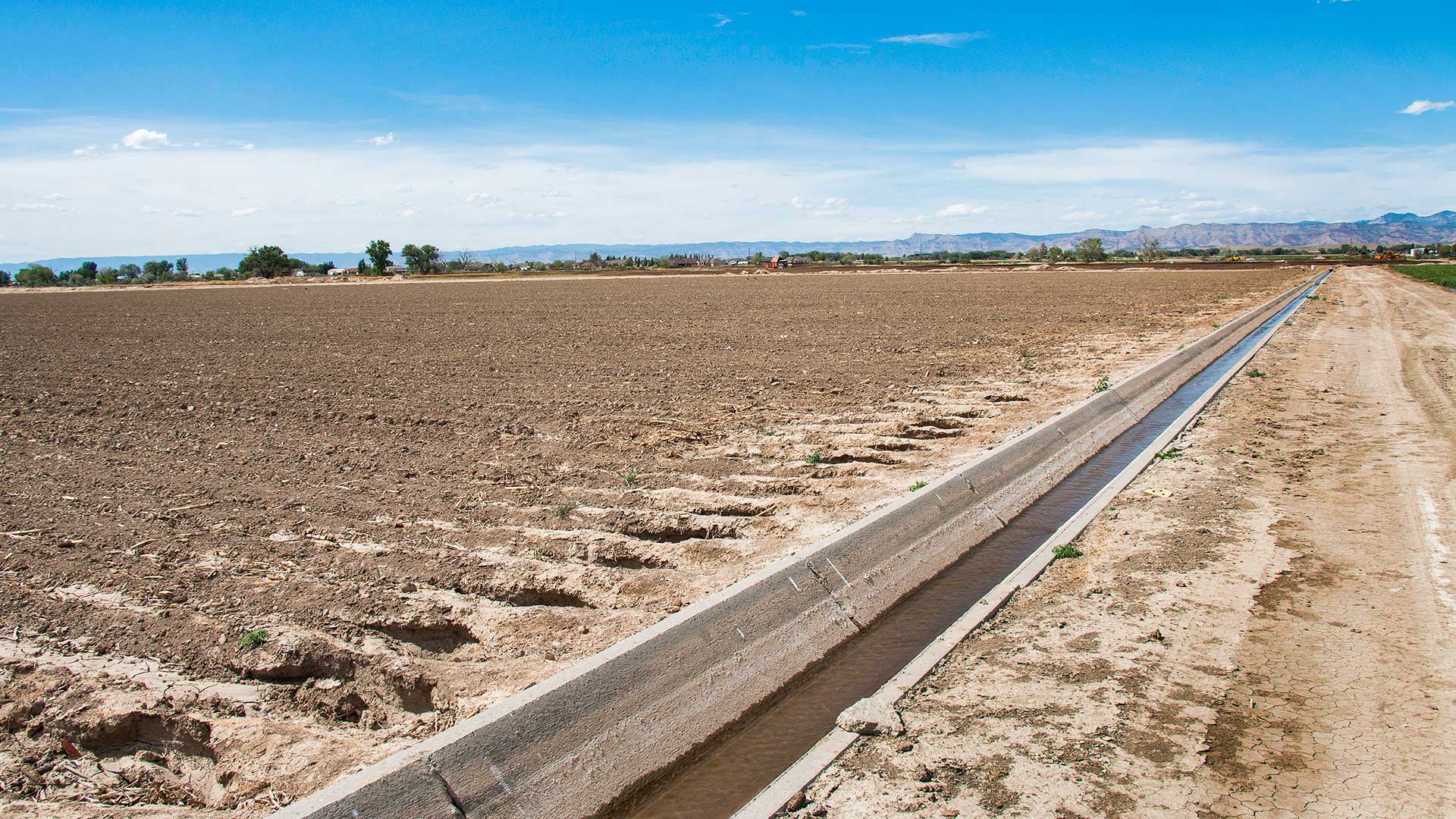 VIEW LARGER A lateral brings water from the Grand Valley Irrigation Company Canal to this parcel of land. This property was part of a $6 million deal WAM made in January.
VIEW LARGER A lateral brings water from the Grand Valley Irrigation Company Canal to this parcel of land. This property was part of a $6 million deal WAM made in January. Deane has been involved in water markets in the West for years, buying water and land tied to water rights. He doesn’t give many interviews, but according to a 2016 ProPublica article, “debt, death and divorce” has become his sort of motto, because those circumstances drive people to sell.
WAM are cash buyers — a rare offer in this rural area. In many cases, WAM makes improvements to irrigation infrastructure, such as adding center pivots and lining ditches, and leases the land back to farmers to keep it in agricultural production.
Grand Valley’s farmland is expansive, with views stretching west to Utah, north to the Book Cliffs and south to Colorado National Monument. It is also exceedingly dry. The area where Lopez’s former farm is located was once a community of homesteaders known as New Liberty, who eked out a living by dryland farming before the construction of irrigation infrastructure, a notion at which Lopez marvels.
Not much would grow here without the region’s two main irrigation canals, which draw water from the Colorado River: Government Highline Canal and Grand Valley Irrigation Canal. The bigger of the two, the 55-mile-long Government Highline, snakes through the northern part of the valley and is managed by GVWUA. One hundred and fifty miles of ditches known as laterals bring water from the main canal to individual farms.
In mid-March, before the water began flowing in the canals and bringing the annual green return of irrigated agriculture to this valley, the air was thick with smoke as farmers burned their ditches and the earth was dusty, brown and parched.
What leaves people scratching their heads is this: How does a New York City investment firm plan to make money from marginal desert land in western Colorado?
“Everyone is very cautious about what these guys from New York are doing out here buying up our ground,” Lopez said. “I mean, honestly, it’s still kind of a mystery what their overall vision is.”
“Temporary, Voluntary, Compensated”
The key to WAM’s overall vision may lie in demand management, a state program still in the investigation and feasibility stage.
At the heart of such a program envisioned by state officials — and designed to be “temporary, voluntary and compensated” — is the concept of paying irrigators to use less water by fallowing fields. By doing so, there will be more water in the Colorado River flowing downstream to be stored in Lake Powell in an effort to bolster reservoir levels and help Colorado meet its Colorado River Compact obligations.
The future of the demand management feasibility investigation is unclear because the state on May 1 cut its budget by $750,000 due to the COVID-19-caused state financial crisis.
The thing many water managers and users in Colorado fear most is what’s known as a compact call. Under the terms of the 1922 Colorado River Compact, the Upper Basin states (Colorado, Utah, Wyoming and New Mexico) are required to deliver 75 million acre-feet of water over 10 years to the Lower Basin states (California, Nevada and Arizona). If the Upper Basin can’t deliver because of drought, climate change or any other reason, it could lead to a compact call, triggering involuntary cutbacks and an interstate legal quagmire that could drag on for decades.
A new demand management program would allow Colorado to send water to a 500,000-acre-foot pool in Lake Powell that would act as a modest insurance policy to help protect the Upper Basin against a compact call.
 VIEW LARGER The Grand River Diversion Dam, also known as the “Roller Dam,” was built in 1913 to divert water from the Colorado River to the Government Highline Canal, which farmers use to irrigate their lands in the Grand Valley. Water Asset Management has been buying up properties irrigated by the water in this canal.
VIEW LARGER The Grand River Diversion Dam, also known as the “Roller Dam,” was built in 1913 to divert water from the Colorado River to the Government Highline Canal, which farmers use to irrigate their lands in the Grand Valley. Water Asset Management has been buying up properties irrigated by the water in this canal. The Grand Valley, which takes its name from the “Grand River,” the historical name for the Colorado River, is well-positioned for a demand management program. Water left in the river at this location is almost certain to reach Lake Powell because there are few major diversions between here and the giant reservoir.
And entities in the Grand Valley have rights to a lot of water. With 1912 adjudication dates, Grand Valley irrigation districts are some of the most-senior water rights on the Colorado River and can call about 2,200 cubic feet per second down through the river system.
There is some precedent that a demand management program would work in the Grand Valley, as some irrigators here have participated in two different experimental pay-to-fallow programs undertaken by the Upper Colorado River Commission and the GVWUA. These types of programs have intense interest from many sectors, including municipalities, which often see transferring water from agriculture as a viable way to increase their supplies, as well as from environmental organizations that would like to see more water stay in the river.
Returns On Water
Since 2017, WAM has made investments in Grand Valley agriculture, choosing to make purchases of parcels in batches every few months. But in the past six months, the hedge fund has taken one step that signals what could be a renewed effort to sway Western water rules in its favor.
WAM recently brought onto its team a heavy hitter in the world of Colorado River politicking: Denver-based attorney James Eklund.
Eklund is the former director of the state’s top water policy agency, the Colorado Water Conservation Board, and served as the state’s representative to the Upper Colorado River Commission, another powerful policymaking agency on the river. He was one of the architects of the Drought Contingency Plan, the document that made the case for a demand management program throughout the Upper Basin. Soon after he left these public posts, he began representing WAM as counsel.
Eklund, who comes from a Western Slope ranching family, says WAM’s strategy is to buy irrigated land and then pump money into cutting-edge technology and practices, thereby increasing irrigation efficiency and crop yield. The leftover water could be, in exchange for payment, sent downstream under a demand management program.
“I definitely think that if there’s a program that pays farmers, (WAM is) interested in it — and for good reason,” Eklund said. “They want to make sure their investment is generating the types of returns that their investors expect.”
That strategy doesn’t sit well with Andy Mueller, general manager of the Colorado River Water Conservation District. His organization’s mission is to protect water interests on the Western Slope, which often means protecting agricultural interests. He worries that WAM’s land buys are being done with the intent to separate the water from the land and that the private equity fund does not have the community’s best interest at heart.
“I think a charitable view would be that they are engaging in the acquisition of private property in a capitalistic society, and they have the right to do that,” Mueller said. “And that might be as charitable as I could get with them.”
So far, WAM has been keeping the land in agricultural production, much the same as it had been with previous owners. According to Colorado water law, to retain its agricultural water rights, the company must continue to put the water to “beneficial use,” or, in other words, utilize the water to keep growing crops.
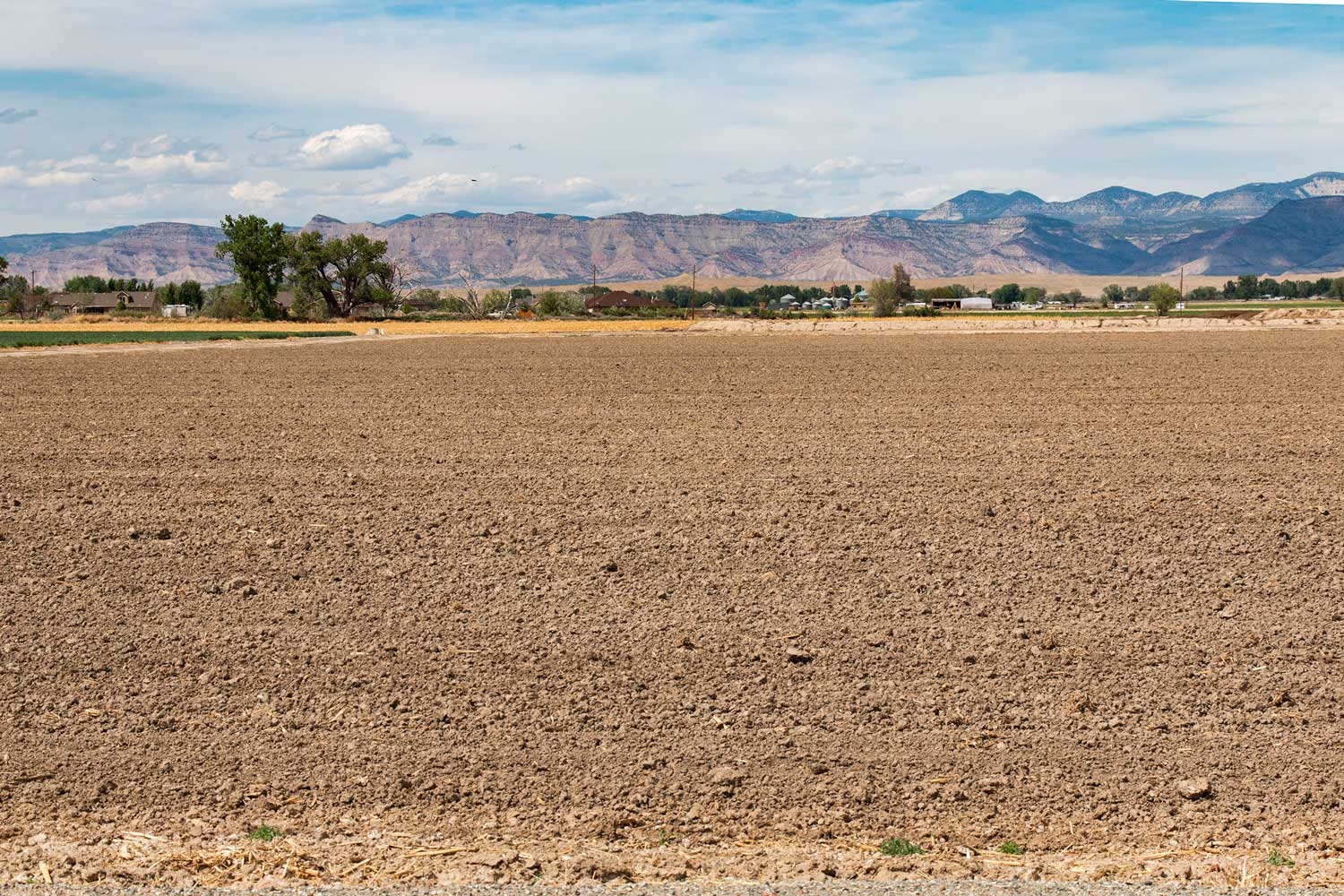 VIEW LARGER This land was part of a $6 million deal WAM made in January. It is irrigated with water from the Grand Valley Irrigation Company Canal.
VIEW LARGER This land was part of a $6 million deal WAM made in January. It is irrigated with water from the Grand Valley Irrigation Company Canal. And Mueller’s fear of separating water from land isn’t currently possible under the rules of GVWUA, where three-quarters of the land purchased by WAM sits. Under that organization’s rules, the water cannot be sold separately from the land; you must own the land to get the associated water.
Without access to GVWUA records, it is difficult, if not impossible, to figure out exactly how much water WAM has the rights to. Class 1 land irrigated by GVWUA comes with 4 acre-feet of water per acre each irrigation season.
There is not a way to tell from publicly available property records how much of the land WAM has purchased is irrigated Class 1 land. But if all the land WAM has purchased is Class 1, then it would have at least 6,636 acre-feet of water.
Eklund said the amount of water held by WAM is akin to financial information, which the hedge fund, per its policy, won’t disclose. GVWUA director Mark Harris and the organization’s counsel, Kirsten Kurath have both repeatedly declined to be interviewed on the record for this story. However, Kurath, said in an email that GVWUA is aware of and monitoring activities within its district.
Another lingering, hard-to-answer question is how much WAM’s water is worth. Under the System Conservation Pilot Program, run by the Upper Colorado River Commission, Grand Valley farmers were paid $200 for every acre-foot of water they left in the river. Using this number as a benchmark, WAM’s 6,636 acre-feet of water could currently be worth more than $1.3 million. But that price the program paid to farmers was to lease it for only one year, which could bring the true value of the transferred water to tens of millions of dollars, experts say. How much it could be worth in a hotter, drier future is unknown.
“A lot of the crops we grow are not very profitable, so I think they are projecting, hey, this water is going to be more valuable than even the crops they are growing with it,” Lopez said.
Preventing Speculation
WAM’s land buys have not escaped the attention of Colorado lawmakers, who say what the company is doing is legally dubious. State Sen. Kerry Donovan is a rancher who represents District 5, a stretch of rural mountains, agricultural valleys and ski towns on the Western Slope.
In the 2020 legislative session, before the coronavirus pandemic slowed legislative activity, she sponsored Senate Bill 48, which Gov. Jared Polis recently signed into law. The new legislation directs Colorado’s Department of Natural Resources to convene a workgroup to explore ways to strengthen the state’s anti-speculation law.
“I also hope (this bill) sends a message to people that might be looking to Colorado to make a quick buck that we’re not interested in that type of behavior in our state,” Donovan said. “If you’re just coming up here to buy up water to turn into a profit in the years to come for your clients, like, ‘No, thank you.’”
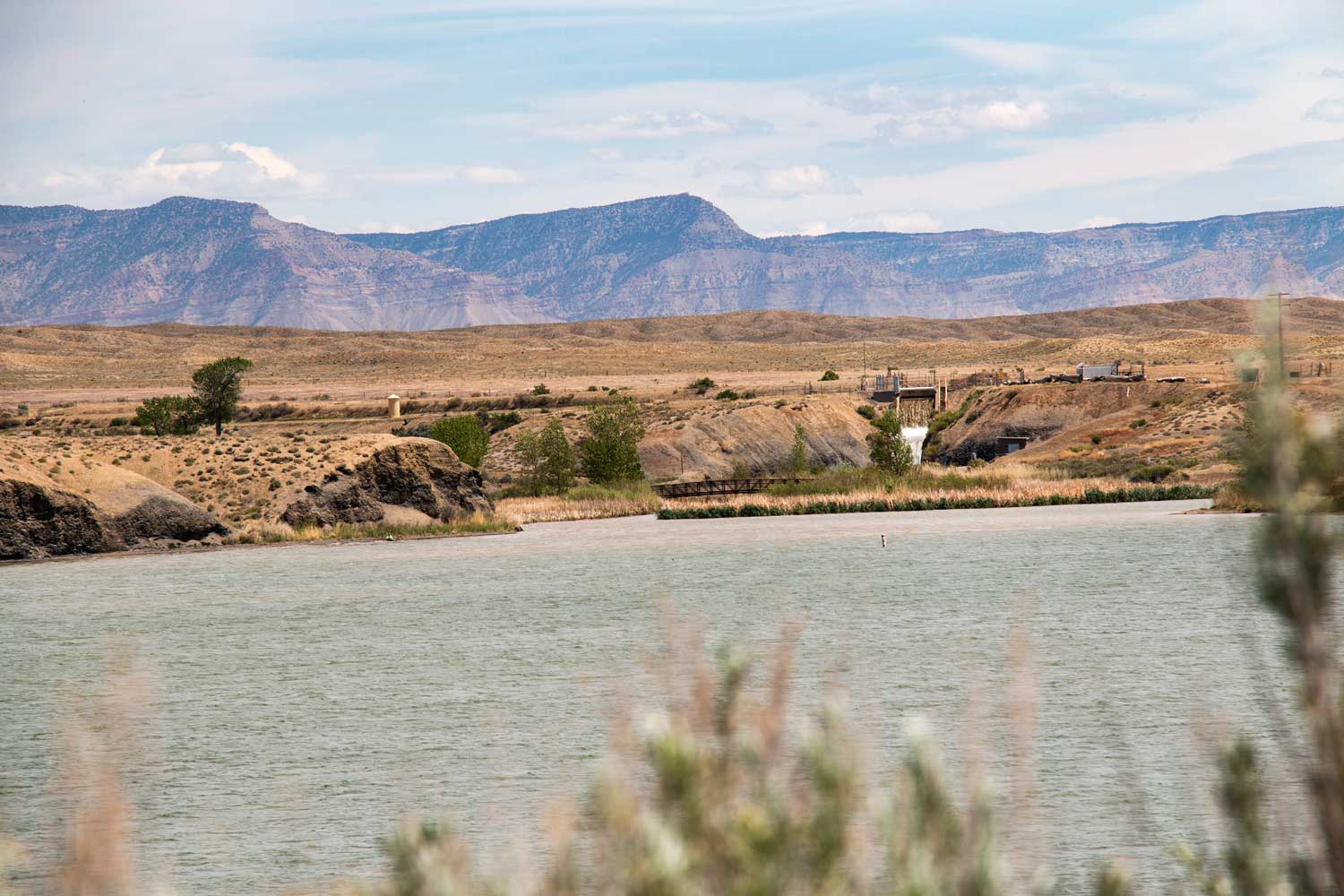 VIEW LARGER Water from the Government Highline Canal pours into Highline Lake in Mack.
VIEW LARGER Water from the Government Highline Canal pours into Highline Lake in Mack. Colorado’s current anti-speculation doctrine is based on case law that says those seeking a water right must have a vested interest in the lands to be served by the water and must have a specific plan to put the water to beneficial use.
“(WAM’s) goal is to buy assets, to make money — and as much money as they can,” Donovan said. “I don’t want that type of player in the prior appropriation system, just full stop.”
WAM attorney Eklund says the investment firm’s directors are not speculators; they are farmers.
“The characterization of any farming or ranching operation that is putting water to a beneficial use as a speculator, that’s just plain-and-simple wrong,” he said. “In light of Colorado water law, this is not accurate as a description that they’re speculating here.”
Eklund sees a bigger role for WAM and other similar players in a potential future water market. He would like to see Colorado fill up that insurance pool in Lake Powell as quickly as possible and said WAM can help the state do that.
“(WAM is) looking at how they can move water down to Lake Powell to avert a crisis,” Eklund said. “And they’re trying to make sure that we’re becoming more resilient in the agricultural economy in the Grand Valley by strategically planning for how that water gets into the account in Lake Powell.”
A Shift?
The type of land purchase that WAM usually pursues has recently shifted. All of the Grand Valley land that the company bought up until this year had been irrigated with water from the Government Highline Canal, where the right to water depends on how much irrigated acreage someone has and where water is tied to the land.
But WAM’s most recent purchase in January was a $6 million deal on 541 acres in Fruita and irrigated by the Grand Valley Irrigation Company Canal, the other big player in Grand Valley agriculture. In its delivery system, shares of water can be bought and sold, and the amount of water is not tied to the land. It marks a departure from the company’s previous purchases, even as Eklund maintains it’s not a change in WAM’s strategy.
“I would say it’s very significant,” Mueller said. “Land that is irrigated under a private water right like the GVIC, that becomes more challenging and more threatening from a permanent-dry-up perspective.”
But even as suspicion and skepticism run high, some Grand Valley farmers, including Lopez, say WAM has been a good neighbor so far.
“Absolutely, they are committed to the future of agriculture in the Grand Valley. They are fronting a lot of money to do these irrigation projects and leasing the ground back to the farmers who had farmed it already,” Lopez said. “Now, is that just to look good to the community and their investors? I have no idea.”
This story is part of a series on water investment in the West, produced by KUNC in Colorado, Aspen Journalism, KJZZ in Arizona and the Nevada Independent.
Aspen Journalism is a local, nonprofit and investigative news organization that covers water and river issues.
KUNC’s Colorado River reporting project is supported by a grant from the Walton Family Foundation. KUNC is solely responsible for its editorial content.
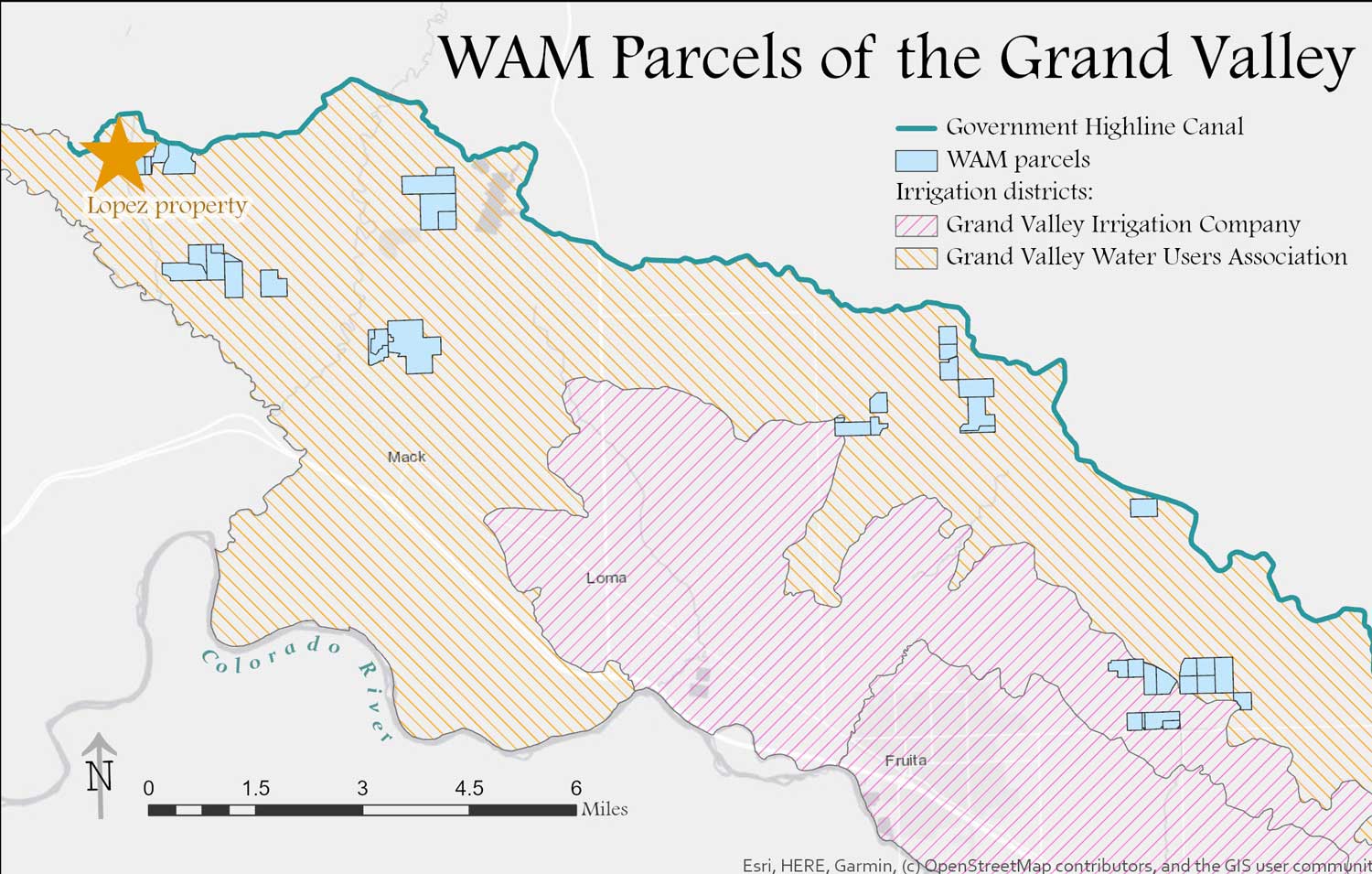

By submitting your comments, you hereby give AZPM the right to post your comments and potentially use them in any other form of media operated by this institution.